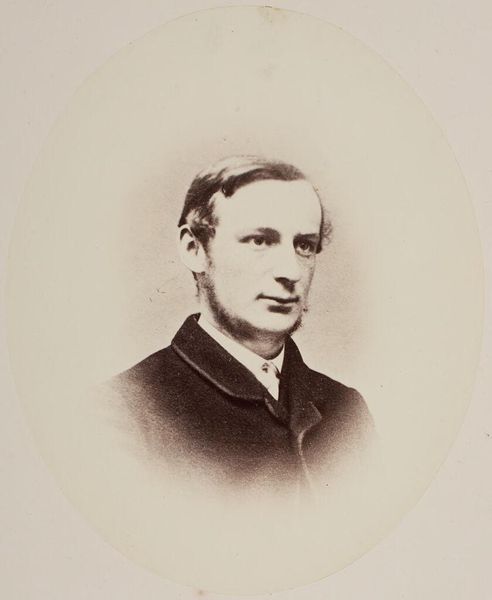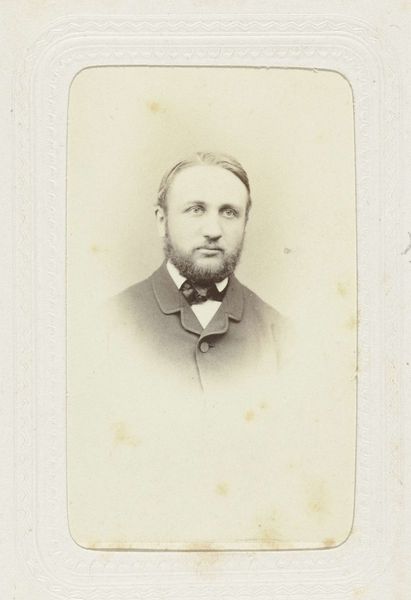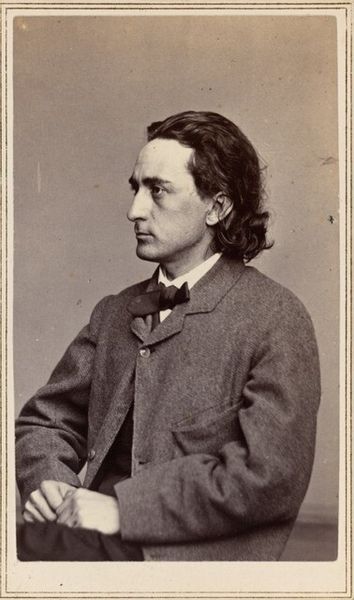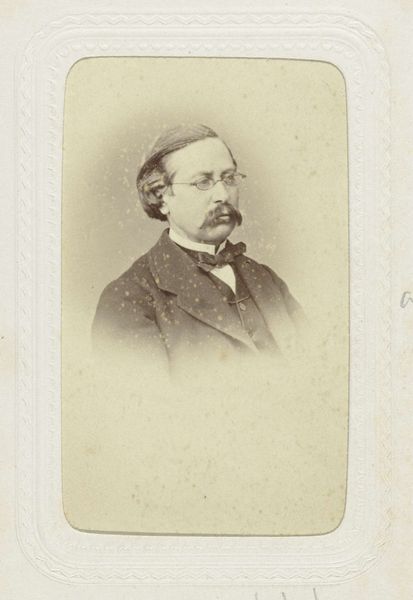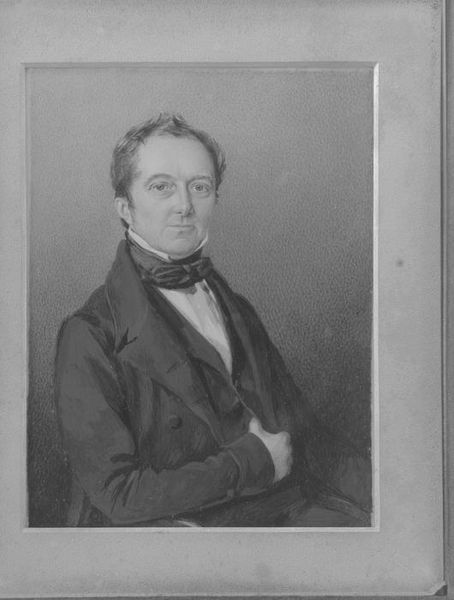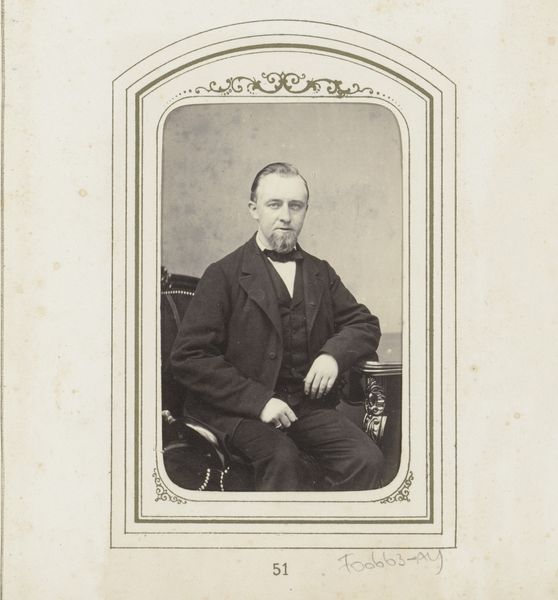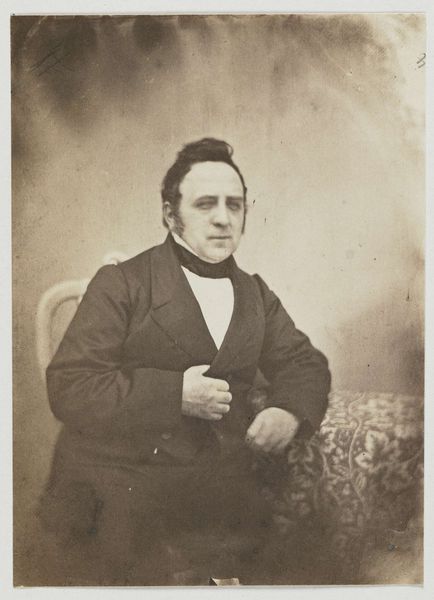
Copyright: Public domain
Curator: This is Félix Nadar’s portrait of Charles Baudelaire, made around 1855. It’s a daguerreotype, a very early photographic process. Editor: Wow. I see right into him. There's such intensity there... a melancholy poet peering out through the silvered glass. It almost feels like I am peering back into time itself. Curator: The daguerreotype process is key to that feeling. Think about what it meant to sit for a portrait then – the exposure times, the immobility required. Photography was still seen almost as alchemy; its truth value hadn't yet become banal. Editor: Yes! He couldn’t just *snap* a selfie! Each molecule in the plate captured, atom by atom, something real, beyond just likeness. But look at the coat – heavy, wool. The set of his jaw. Even without knowing he was Baudelaire, I sense…dissatisfaction. Curator: It’s worth remembering that Nadar was interested in the democratization of portraiture. The industrial aspect of this emerging technology would allow more people than ever before to participate in representation, which before had only been available to wealthy elite able to sit for painting. Editor: In some ways, photography *did* deliver on that promise. But in other ways, these images reinforced social hierarchies, just like painted portraits had for centuries before. Still…there's such power here! Did Baudelaire feel like he was complicit? Did he sense the commodification of even his image? Curator: Absolutely, those are great points. Baudelaire certainly understood that the artistic representation would evolve, with or without his cooperation. Perhaps we’re sensing something of his surrender in the set of his eyes, or in the dark shadows that envelope him. Editor: I like thinking of the dark shadows in him that day as almost an unconscious cooperation. An image that shows exactly the shadow of something he knows has arrived, but also does not have the capability to change. I appreciate Nadar’s willingness to capture such depth, or perhaps Nadar only intended to capture the artist and nothing else! Who knows. Curator: I appreciate that. The materiality and labor inherent in early photography brings those social and philosophical dimensions into sharp focus. It isn't just a picture; it is the very act of capture and consumption laid bare.
Comments
No comments
Be the first to comment and join the conversation on the ultimate creative platform.
